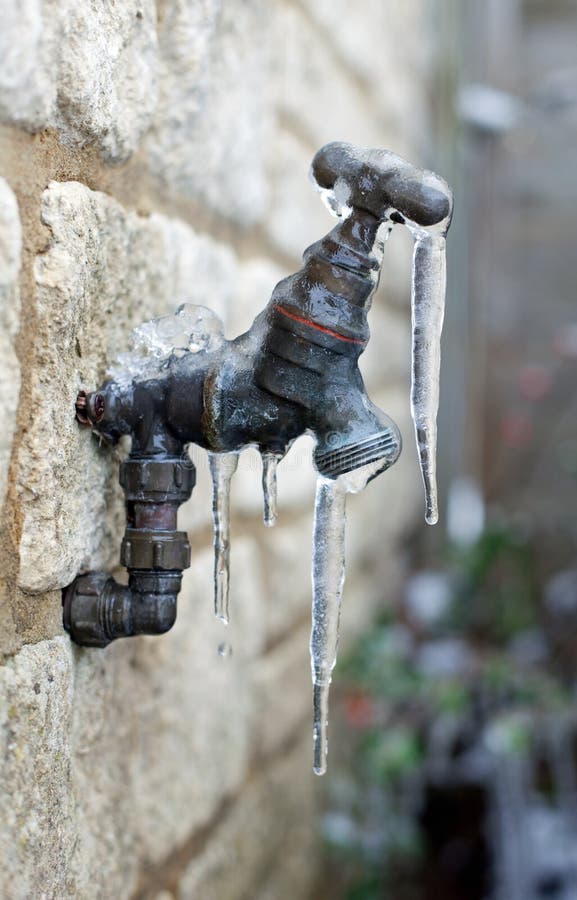Tips to Protect Pipes from Freezing: Professional Tips
Tips to Protect Pipes from Freezing: Professional Tips
Blog Article
Are you currently hunting for info involving Helpful Tips to Prevent Frozen Pipes this Winter?

Cold weather can ruin your pipes, especially by freezing pipes. Below's exactly how to prevent it from occurring and what to do if it does.
Introduction
As temperatures decline, the risk of icy pipelines rises, potentially resulting in expensive repair services and water damage. Understanding how to prevent icy pipelines is vital for house owners in chilly environments.
Avoidance Tips
Insulating prone pipelines
Wrap pipes in insulation sleeves or use warm tape to secure them from freezing temperature levels. Concentrate on pipes in unheated or exterior locations of the home.
Heating methods
Keep interior spaces effectively heated up, particularly areas with plumbing. Open up cabinet doors to permit cozy air to distribute around pipes under sinks.
How to determine frozen pipelines
Try to find lowered water flow from faucets, unusual odors or noises from pipelines, and visible frost on exposed pipes.
Long-Term Solutions
Structural adjustments
Think about rerouting pipes away from exterior wall surfaces or unheated locations. Include extra insulation to attics, cellars, and crawl spaces.
Updating insulation
Purchase high-grade insulation for pipelines, attics, and walls. Correct insulation assists preserve consistent temperatures and reduces the threat of frozen pipelines.
Securing Outside Pipes
Garden hoses and exterior faucets
Separate and drain pipes garden pipes before winter. Set up frost-proof faucets or cover outside faucets with protected caps.
Comprehending Frozen Pipes
What triggers pipelines to ice up?
Pipelines freeze when exposed to temperature levels below 32 ° F (0 ° C) for expanded durations. As water inside the pipes freezes, it increases, putting pressure on the pipe walls and potentially triggering them to burst.
Risks and problems
Frozen pipes can cause water supply interruptions, property damage, and costly repairs. Burst pipes can flood homes and create considerable structural damage.
Signs of Frozen Pipeline
Identifying frozen pipes early can prevent them from rupturing.
What to Do If Your Pipes Freeze
Immediate activities to take
If you suspect icy pipelines, maintain faucets available to soothe pressure as the ice thaws. Use a hairdryer or towels soaked in hot water to thaw pipes gradually.
Conclusion
Stopping frozen pipelines needs aggressive actions and quick feedbacks. By recognizing the causes, indicators, and preventive measures, house owners can shield their plumbing during winter.
5 Ways to Prevent Frozen Pipes
Drain Outdoor Faucets and Disconnect Hoses
First, close the shut-off valve that controls the flow of water in the pipe to your outdoor faucet. Then, head outside to disconnect and drain your hose and open the outdoor faucet to allow the water to completely drain out of the line. Turn off the faucet when done. Finally, head back to the shut-off valve and drain the remaining water inside the pipe into a bucket or container. Additionally, if you have a home irrigation system, you should consider hiring an expert to clear the system of water each year.
Insulate Pipes
One of the best and most cost-effective methods for preventing frozen water pipes is to wrap your pipes with insulation. This is especially important for areas in your home that aren’t exposed to heat, such as an attic. We suggest using foam sleeves, which can typically be found at your local hardware store.
Keep Heat Running at 65
Your pipes are located inside your walls, and the temperature there is much colder than the rest of the house. To prevent your pipes from freezing, The Insurance Information Institute suggests that you keep your home heated to at least 65 degrees, even when traveling. You may want to invest in smart devices that can keep an eye on the temperature in your home while you’re away.
Leave Water Dripping
Moving water — even a small trickle — can prevent ice from forming inside your pipes. When freezing temps are imminent, start a drip of water from all faucets that serve exposed pipes. Leaving a few faucets running will also help relieve pressure inside the pipes and help prevent a rupture if the water inside freezes.
Open Cupboard Doors
Warm your kitchen and bathroom pipes by opening cupboards and vanities. You should also leave your interior doors ajar to help warm air circulate evenly throughout your home.

We hope you liked our piece about Preventing and dealing with frozen pipes. Thanks so much for spending some time to read our blog post. If you liked our article please make sure you remember to pass it around. Thanks so much for your time spent reading it.
Visit Page Report this page